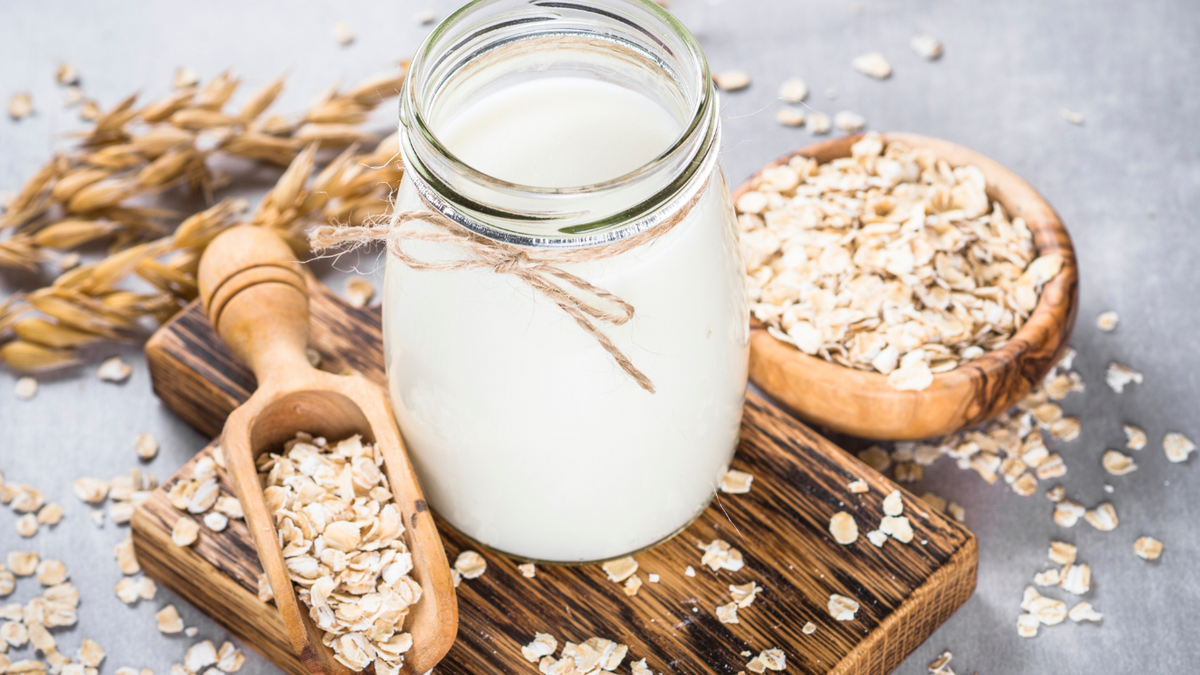
How To Make Oat Milk - And Where It Came From In The First Place!
|
|
Time to read 4 min
|
|
Time to read 4 min
Haven't you heard!? Oat milk has emerged as a popular dairy-free alternative to traditional cow's milk, captivating taste buds with its creamy texture and subtle nutty flavor. As its popularity continues to soar, more and more people have ben wondering “what even is Oat Milk anyway?”. So at Superfood Market we decided to explore the history, origins, and health benefits that have contributed to oat milk's widespread adoption.
Oat milk's roots can be traced back to the 1990s, when the concept of plant-based alternatives gained momentum. However, it wasn't until the early 21st century that oat milk truly took off, thanks to the efforts of Swedish scientist Rickard Öste and his team. Öste, inspired by the idea of finding sustainable alternatives, developed a process for extracting liquid from oats without compromising their nutritional content.
In 1994, Öste co-founded Oatly, a Swedish company that pioneered the commercial production of oat milk. Oatly's success in Europe laid the foundation for oat milk's global popularity, transforming it from a niche product to a mainstream dairy alternative.
Nutritional Content: Oat milk is naturally rich in nutrients, including fibre, vitamins (such as B vitamins), and minerals (such as calcium and iron). Additionally, many commercial varieties are fortified with vitamins D and B12, addressing common nutritional concerns associated with plant-based diets.
Dairy-Free and Lactose-Free: Oat milk is an excellent option for individuals who are lactose intolerant or allergic to dairy. It provides a creamy texture and a similar mouthfeel to cow's milk without the discomfort associated with dairy consumption.
Heart-Healthy: Oats contain beta-glucans, a type of soluble fiber known for its heart-healthy properties. Regular consumption of beta-glucans may help reduce cholesterol levels, making oat milk a heart-friendly choice.
Environmental Sustainability: Oats require significantly less water to cultivate compared to traditional dairy farming, contributing to a smaller environmental footprint. The cultivation of oats also has lower greenhouse gas emissions compared to cattle farming, aligning with the growing interest in sustainable food choices.
Lactose-Free: Unlike cow's milk, which contains lactose, oat milk is naturally lactose-free, making it a suitable option for those with lactose intolerance or following a vegan diet.
Lower in Saturated Fat: Oat milk is typically lower in saturated fat compared to whole cow's milk. Choosing low-fat or skim cow's milk can reduce saturated fat intake, but oat milk offers a naturally lower-fat alternative.
Vitamin and Mineral Content: While cow's milk is a good source of calcium and vitamin D, oat milk can match or exceed these levels when fortified. It's essential to choose fortified oat milk to ensure adequate intake of these nutrients.
Environmental Impact: The production of oat milk generally has a lower environmental impact compared to traditional dairy farming. Oats are a hardy crop that requires fewer resources, contributing to sustainability.
Oat milk has gained immense popularity in recent years as a delicious and dairy-free alternative to traditional cow's milk. Not only is it a great option for those with lactose intolerance or allergies, but it also offers a creamy texture and a subtle, nutty flavor. Making oat milk at home is surprisingly easy, cost-effective, and allows you to customize the sweetness and thickness according to your preference. In this article, we'll guide you through the simple steps of creating your own oat milk in the comfort of your kitchen.
Rinse the Oats: Start by rinsing the rolled oats under cold running water to remove excess starch. This helps prevent the oat milk from becoming too slimy.
Blend Oats and Water: In a blender, combine the rinsed oats and four cups of water. Blend on high for about 30 seconds until the mixture becomes creamy.
Strain the Mixture: Place a nut milk bag or a piece of cheesecloth over a bowl or pitcher. Pour the blended mixture through the bag or cloth to separate the liquid from the oat pulp. Gently squeeze or press to extract as much liquid as possible.
Sweeten and Flavour (Optional): If you prefer sweetened oat milk, add your desired sweetener to the strained liquid. Maple syrup, agave nectar, or dates work well for natural sweetness. For added flavor, include a teaspoon of vanilla extract. Add a pinch of salt to enhance the overall taste.
Store and Refrigerate: Transfer the strained and sweetened oat milk into a clean glass container with a lid. Refrigerate and shake well before each use, as homemade oat milk can separate over time.
Enjoy Your Homemade Oat Milk: Use your homemade oat milk just like you would any other milk—pour it over cereal, mix it into coffee, or incorporate it into your favorite recipes. Remember that homemade oat milk may have a slightly different consistency than store-bought versions, but the taste and nutritional benefits make it a worthy alternative.
Oat milk's journey from a Swedish innovation to a global phenomenon reflects not only changing dietary preferences but also a growing awareness of sustainability and health. With its nutritional benefits, versatility, and environmental advantages, oat milk continues to carve its niche in the world of plant-based alternatives, offering a tasty and wholesome option for those seeking a dairy-free lifestyle.
Making oat milk at home is a rewarding and cost-effective way to enjoy a nutritious and dairy-free beverage. By following these simple steps and experimenting with various flavors, you can customize your homemade oat milk to suit your taste preferences. Enjoy the creamy goodness while reaping the nutritional benefits of this plant-based alternative.